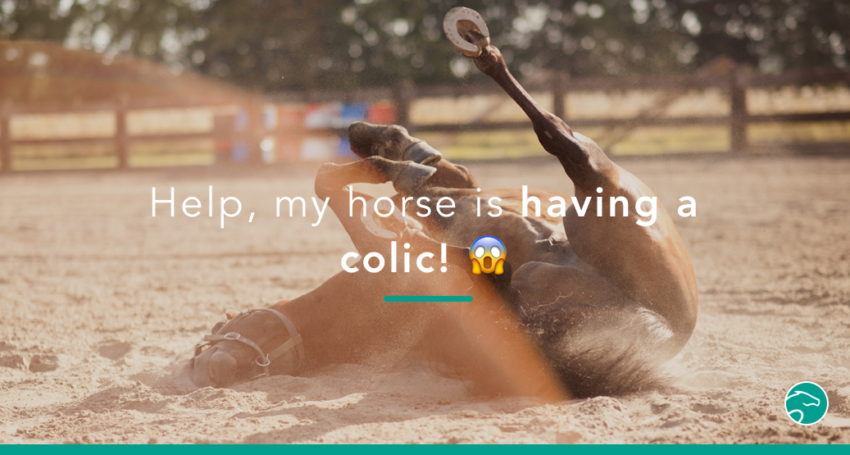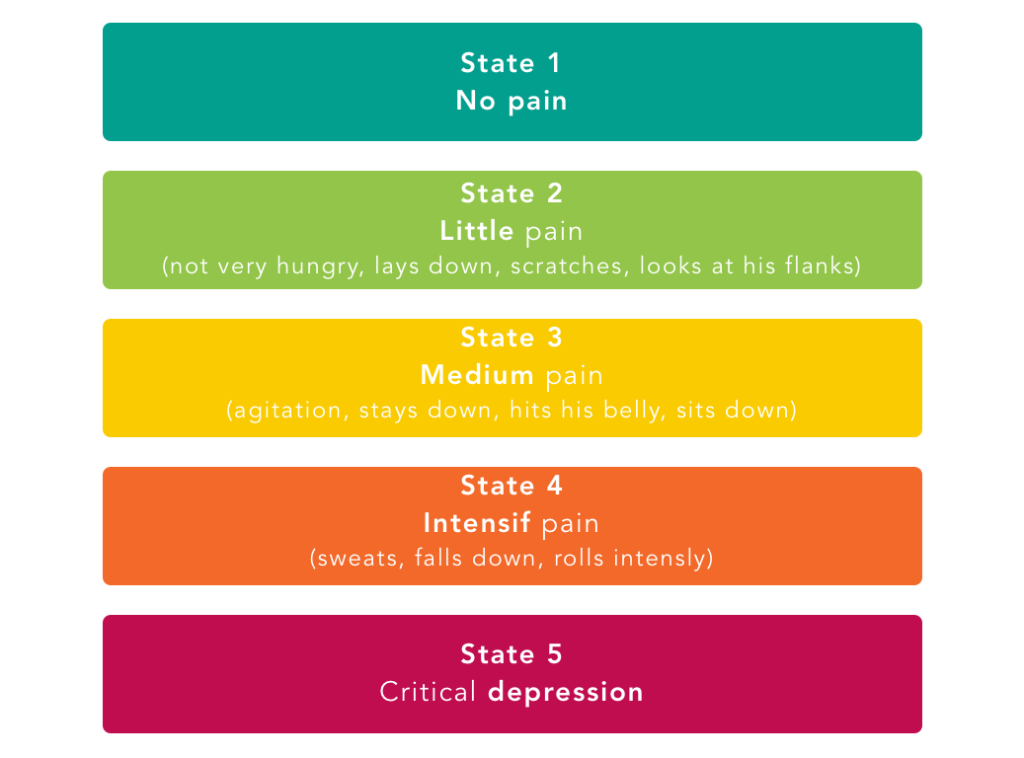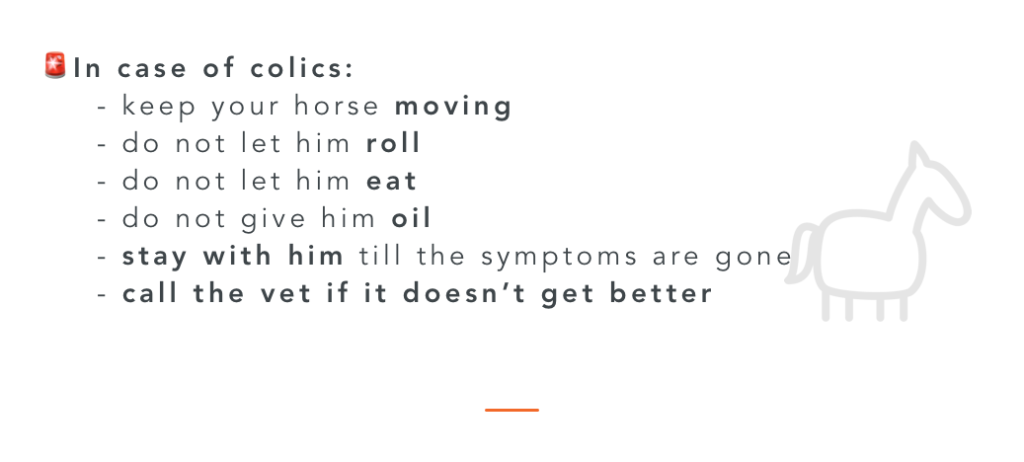
What to do When Your Horse has Colics?
Help, my horse is colicking😱
Colics are the main death causes in equines. Indeed, their digestive system is particularly sensitive to stress and pain. However, also know that 75% of colics resolve within 24 hours after the first symptoms. Hence the interest of knowing how to detect them in time and act efficiently! I’ll explain here how to deal with a colicking horse.
Table des matières
Spasmodic colic, what is it?
These are low intensity abdominal pain. In general, they are due to digestive tract spasms. What we, bipeds, call bloating or low constipation.
To put it simply, hard droppings or pockets of gas have difficulties passing through the digestive tract. To go forward, they must get the pipes wider. Faced with distention, the nerve fibers of the digestive tract send a message of pain to the brain.
There are many different types of colic. Some other colics are much more painful and require emergency veterinary care. 🚨

How to detect colics?
Their are different colic’s symptoms:
- your horse gets up and goes to down unceasingly as something is disturbing him
- he scratches for no reason
- the horse rolls insistently
- he does the flehmen
- he looks at his flanks
If your horse has one or more of these symptoms, it is likely that he’s suffering from a spasmodic colic. It is often benign, but it can degenerate quickly therefore, it requires to be taken seriously.
⚠ Caution ⚠: For horses with severe pain, sweat and strong breathing, etc. An immediate veterinarian intervention is required.
🚫 False good ideas against colics🚫
Don’ts # 1 – Let your horse loose and let him get down or even roll around.
Do not let your horse roll. The end of intestine field with droppings can move into the abdominal cavity. It can thus cause abnormal angulation of the digestive tract, in other words a twist.
Your horse will find himself in a much more complicated situation that may require an operation.
Don’ts # 2 – Waiting for the next day
“It’s okay, we’ll come back tonight or tomorrow morning …”
By leaving the horse unattended, the consequences are likely to be the same as when letting him roll.
So yes, it’s sometimes annoying but believe me when I say that you’d rather spend a few more hours at the stables than finding your horse with a twisted stomach the next day.
Don’ts # 3 – Give oil
“We will make him swallow some oil as the vet does”
Well, it’s actually a very bad idea. Your horse could swallow it wrongly. If this happens, the oil will go in the lungs and that’s how the small mild colic can becomes a large and incurable pulmonary infection …
✅ Real good ideas against colics✅
To do # 1 – Keep your horse moving
Keep him busy walking while the blocage passes through.
It sounds innocuous but it is devilishly effective!
To do # 2 – Leave him on an empty stomach
Once the pain seems to be gone, leave him on an empty stomach overnight. This to avoid creating more blockage. For that, use a “anti-colic basket”. It’s always heart breaking to make them wear that but he’ll thank you later.
⚠ Attention ⚠: do not scream victory at the sight of his first poop 💩. Although this is an encouraging sign, the digestive system of the horse being very long, the blockage may be still there. The poop that comes out is not necessarily the one that was problematic. 😥

And if it does not go through? 😱
You’ve tried walking, belly massages, incantation or even the rain dance but unfortunately your dear horsy isn’t feeling any better.
Finally, after a few hours, you resign and decide to call your vet. And that’s a really good idea! Early treatments reduce the risks of complications!
Do not hesitate to mention things that may be important for your vet to know. For example: the evolution and intensity of pain, recent dewormer, food change or treatment in progress. A good clinical examination as well as a “visit” of the abdomen via the rectum (transrectal palpation) makes it possible to estimate the gravity of the situation.
What veterinary treatment for horse with colic? 💉
The treatment will be adapted according to what will be discovered during the rectal palpation as well as the state of hydration of your horse. Because when they get stomach aches horses usually stop drinking. 🐫
Treatments can consist in nasogastric sounding. A plastic tube is introduced through the nose to go into the stomach to pass paraffin oil. This oil will help the blockage.
Anti-inflammatories are prescribed to relieve the pain associated to the blockage. In cases of significant dehydration or big blockage, a perfusion can help to solve the problem.
No worries: small spasmodic colics are the easiest to treat if they are detected in time. Also, they are not necessarily related to a management error of your horse, especially if it is an isolated incident.
However, in case of repeated colic, increased monitoring and environmental management analysis of your horse is strongly recommended.
Prevention is the key!
The best thing against colics is to avoid them! For that I wrote you an article to explain the 6 good reflexes to avoid colic. It will help you set up the ideal environment which will help limit the risks of colics.
📚Read more: 6 Good Reflexes to Avoid Colics in Horses
Till next article,
Marine Slove